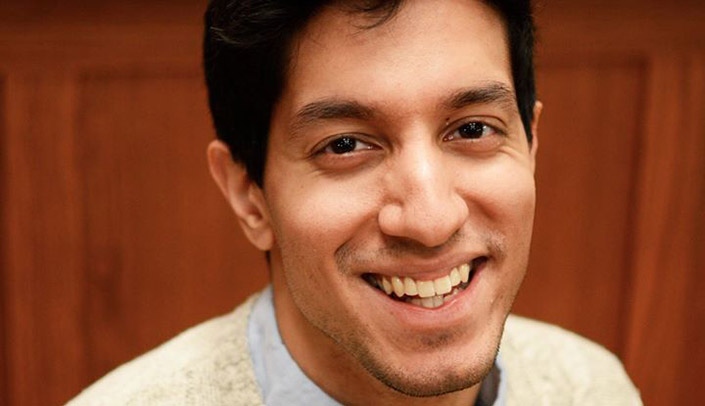A UNMC medical student is lead author in a research letter published in the Journal of General Internal Medicine that found COVID-19 has disproportionately affected socially vulnerable communities, especially minority and non-English speaking ones, in both rural and urban areas of the United States.
The virus itself does not discriminate, said Rohan Khazanchi, a fourth-year student in the UNMC College of Medicine. But structural vulnerabilities do: “Anybody can get COVID-19,” Khazanchi said, “but the reality is some folks are at higher risk because of overarching societal inequities or barriers to accessing health care.”
Khazanchi led the study with Evan Beiter, a student at Harvard Medical School, and the team was mentored by senior author Ishani Ganguli, M.D., M.P.H., a physician-researcher at Brigham and Women’s Hospital and assistant professor at Harvard Medical School.
The researchers analyzed COVID-19 case and death rates at the county level using data compiled by The New York Times from health agency reports. The team based its evaluation of county-level risk characteristics on the Centers for Disease Control and Prevention’s validated Social Vulnerability Index.
Khazanchi concluded that the increased risk of infection among minorities is, “Less about individual choices and more about the difficult decisions that folks from marginalized communities have to make.”
For example, some of us can afford to work from home during a pandemic. Others must put themselves in harm’s way in order to put food on the table. This is evident right here in Nebraska, where meatpacking plants staffed by blue-collar Latino and immigrant workers have grappled with COVID-19 outbreaks.
The paper’s key points include:
- Even among only rural and only urban counties, vulnerability by race, ethnicity and English language proficiency was associated with increased risk of COVID-19 diagnosis.
- Compared with those in the least vulnerable counties overall, people in the most vulnerable counties had 1.63-fold greater risk of COVID-19 diagnosis and 1.73-fold greater risk of death.
- When considering vulnerability by race, ethnicity and English language proficiency, people in the most vulnerable counties had 4.94-fold and 4.74-fold greater risks of COVID-19 diagnosis and death, respectively.
- In urban areas, vulnerability by poverty, unemployment, crowded housing and vehicle access were also associated with increased COVID-19 diagnosis and death.
“COVID-19 is a disease that affects all of us in some way,” Khazanchi said. “However, if certain communities are disproportionately affected, it will slow down progress for all of society.”

Congratulations on this publication, Rohan! Your UNMC community is proud of this work!
Congrats Rohan! Nice work.
Congratulations Rohan for nice work!
Well done Rohan! Nice write up
Congratulations Rohan! This is important information. Great work!
Congrats Rohan and Evan! Nice work and helpful information.